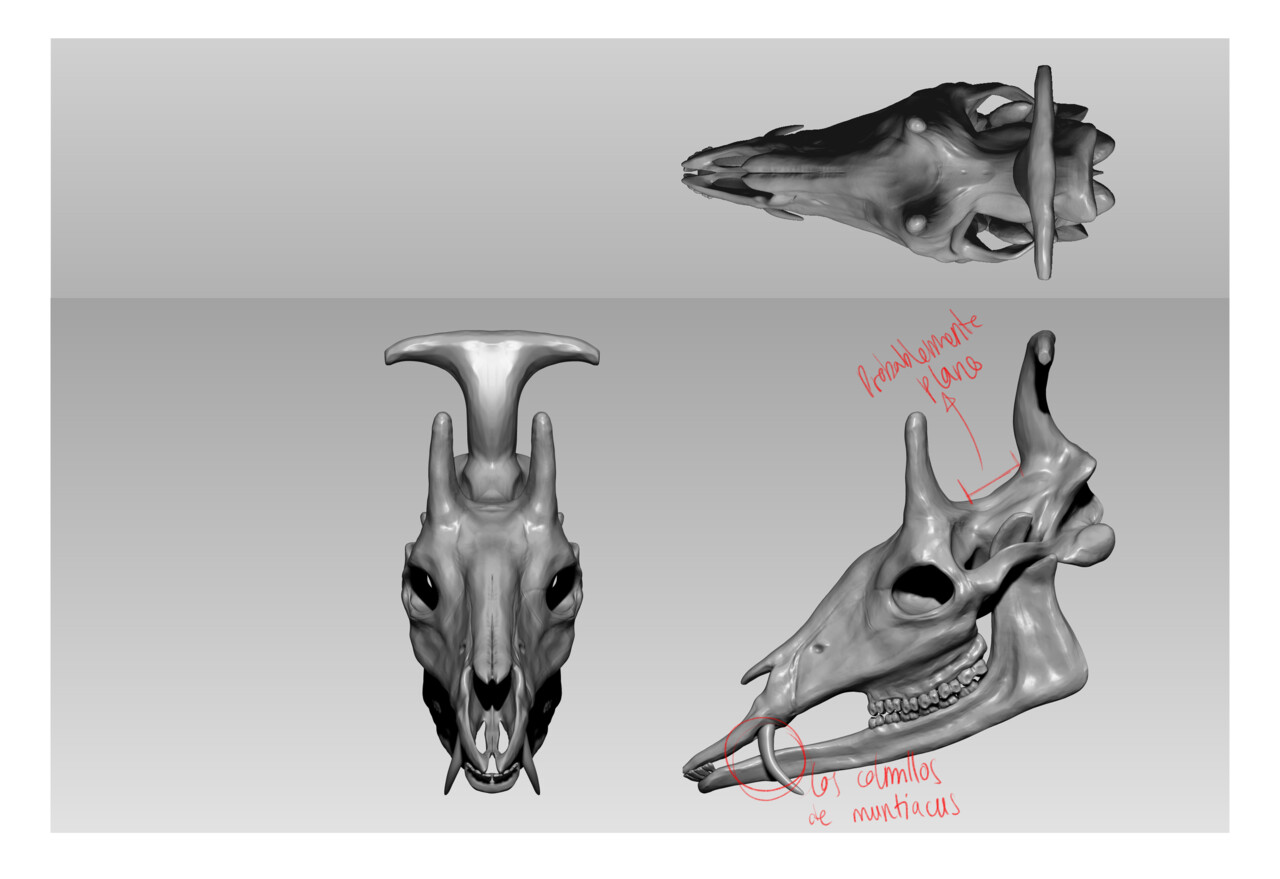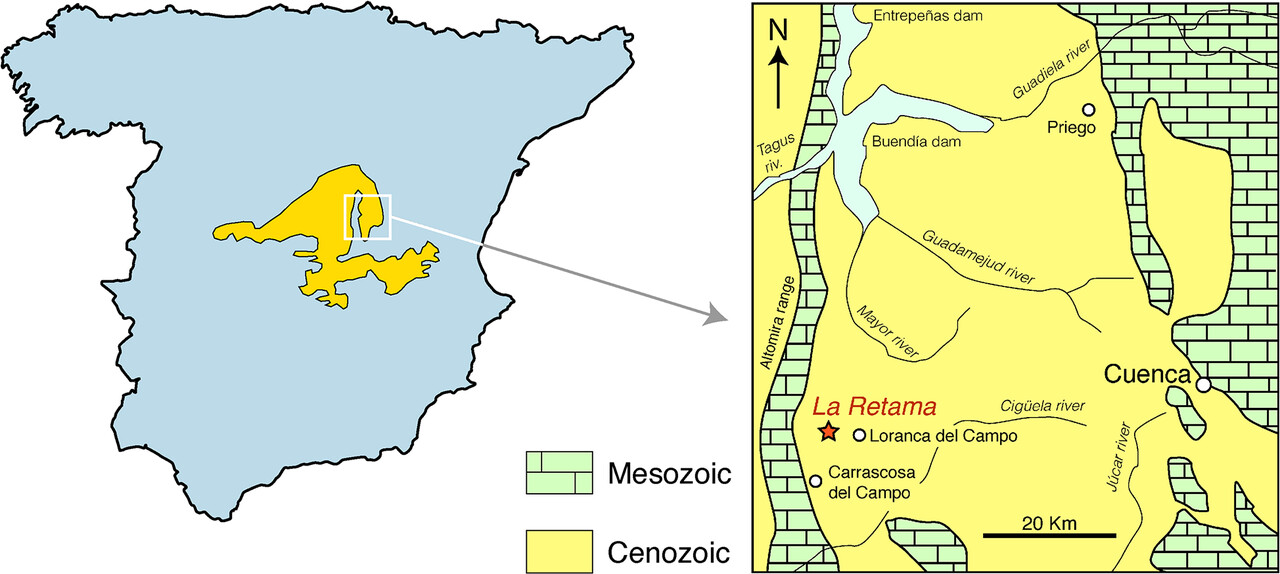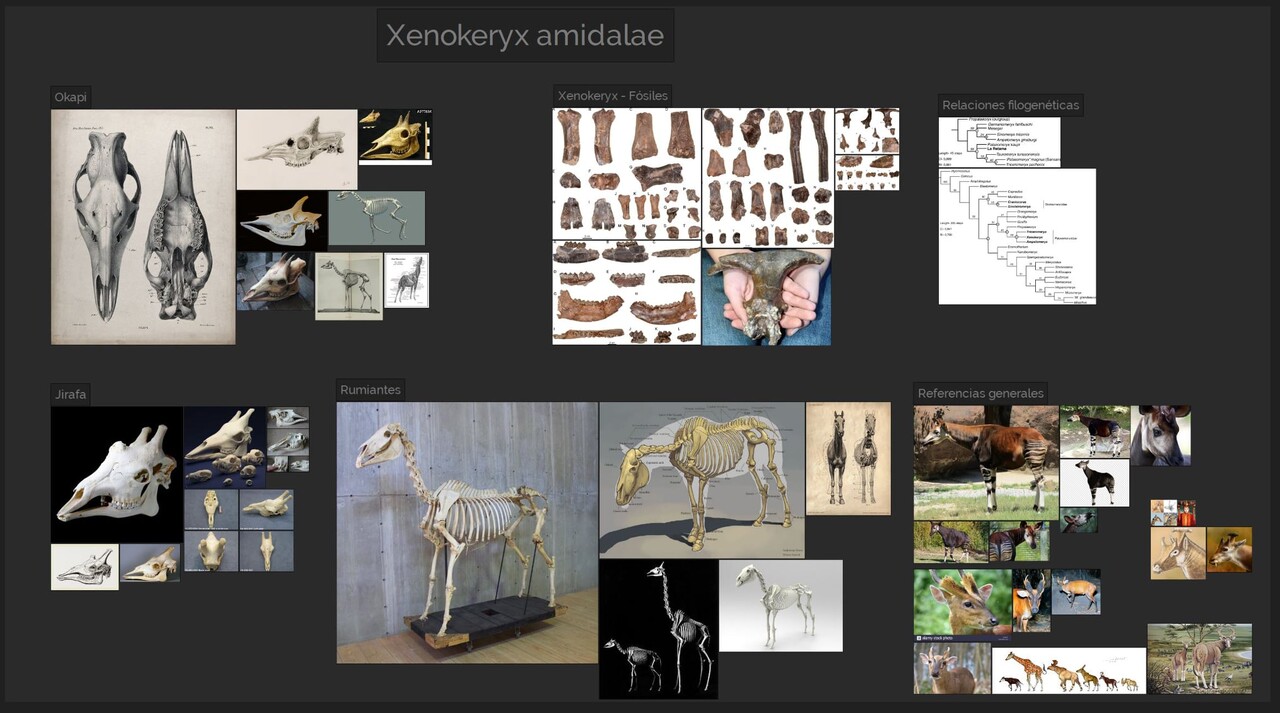Hey everyone!
Some weeks ago I started a reconstruction of an extinct animal for Il·lustra Ciència. I remembered I had Artstation Pro and I thought it could be nice to share with you the process.
The species i'm reconstructing is xenokeryx amidalae, an extinct genus of ruminant related to giraffes from the Miocene (17-15 Ma). The only specimen known was found in La Retama, Spain. The fossil remains consist in cranial fragments including the three appendage, dentition and some fragmentary postcranial parts.
Xenos, greek for strange, keryx referring to horn. Meaning ‘strange horn’. And Amidalae referred to the fictional character Padmé Amidala from Star Wars, due to the striking resemblance that the occipital appendage of Xenokeryx bears to one of the hairstyles that the aforementioned character shows in The Phantom Menace feature film.
First step is cover information. Trust me, a good preproduction is way better than realizing your references are wrong and you have to fix the model over and over. Take your time doing it. I found a couple of paleontological papers describing this genus and thanks to this I was able to find the closed relatives. And last, here you can see the main photographic references I had before start the ZBrush work. I will show you the final PureRef and you will see the big difference between this two boards :D
Thanks to Hugo Salais who is helping me with the scientific feedback, he is also a great 3D artist!
https://www.artstation.com/metazoa3d
Go check the original project to see the final model:
https://www.artstation.com/artwork/kDKJ0A






